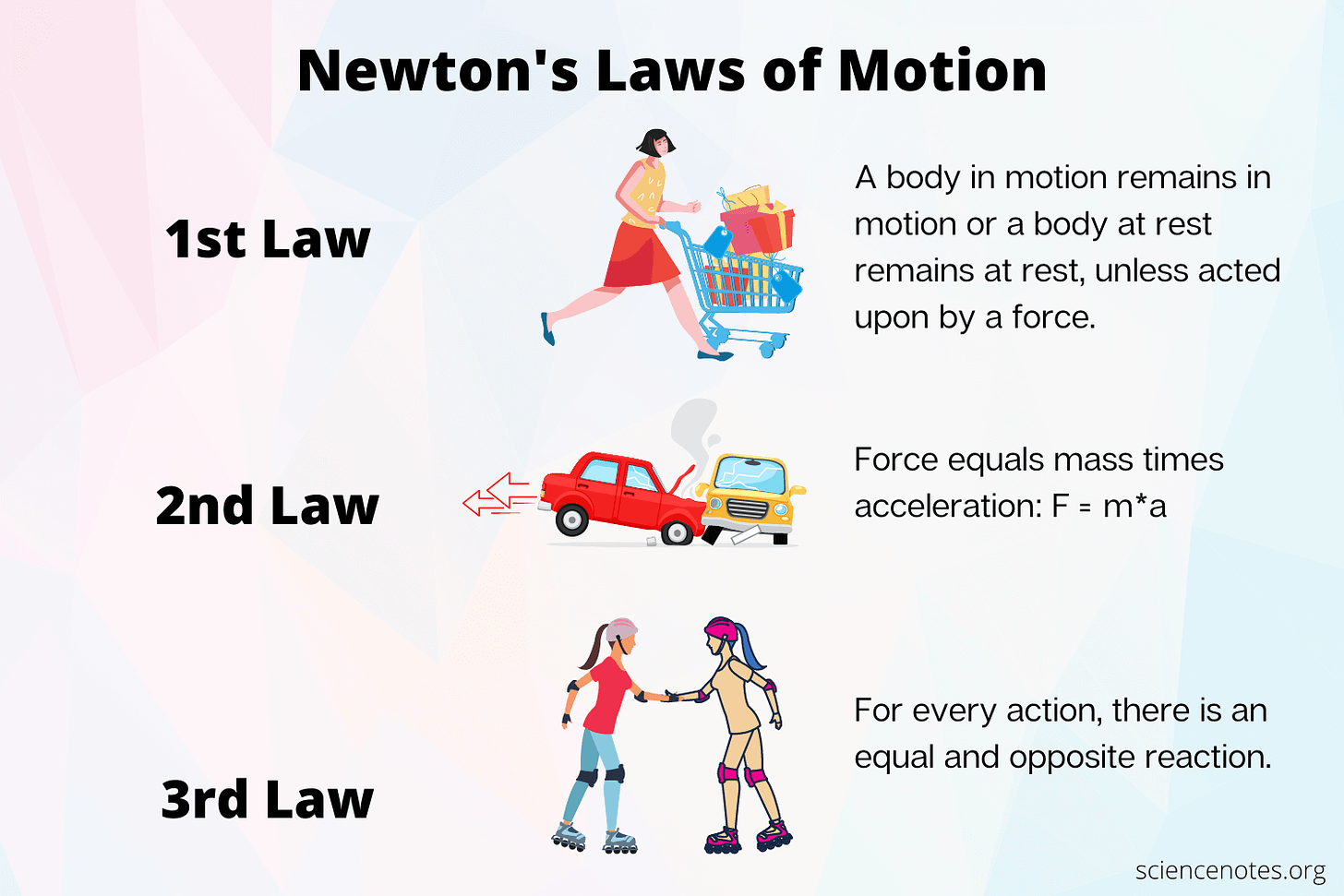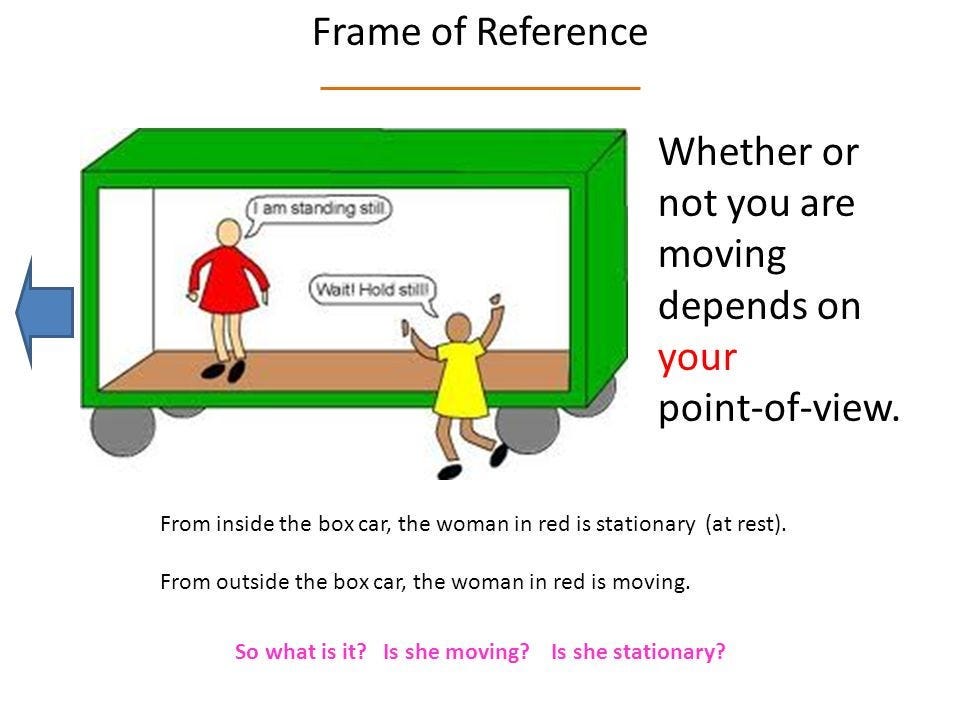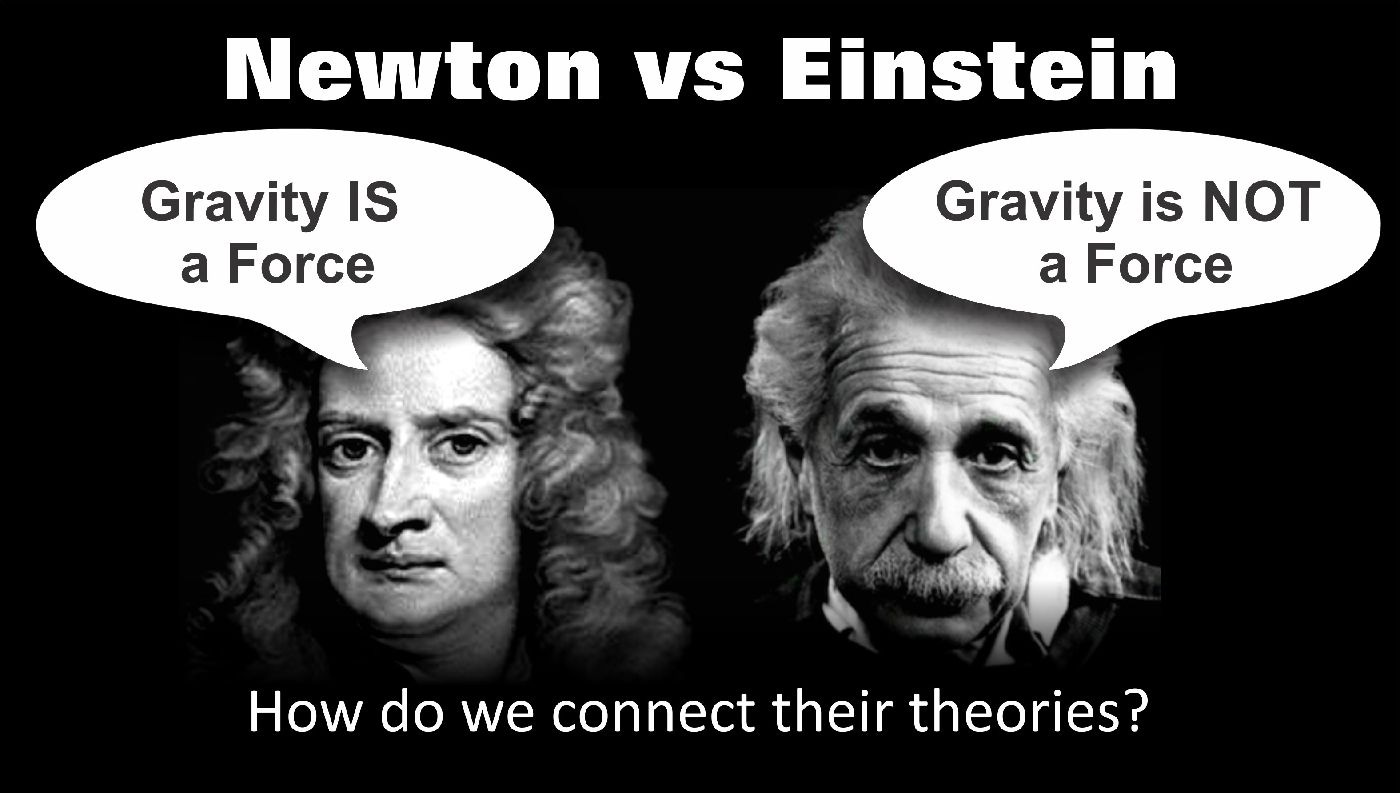Saturday, May 11, 2024
The Inherent Problems of Newton’s and Einstein’s Physics. 'Laws' which don’t explain reality.
Nothing better illustrates $cientism than the dogma of modern cosmology and physics. Even if the underlying assumptions are wrong, it is more agreeable to live the lie than admit 'horrible truths'.
by StFerdIII
Prologue
Philosophy and world-views are always the foundation of ‘The Science’ past or present. In the confused, anti-reality modern clown-world of secular materialism and nihilism, the dogmas of ‘settled science’ are religious gospel to those who believe, and to the powers that benefit. ‘Cui bono’ as the Roman lawyer Cicero supposedly asked. In our world, as evidenced by the Corona scamdemic, the Climate cult, and the flying virus (‘intracellular parasite’) mythology, following money and self-interest is the shortest path to find ‘The Science’. Enrichment and power matter far more than truth or real science.
Scientism’s religious dogma is built upon unceasing propaganda and financial largesse. Within every domain of ‘The Science’ a religious liturgy exists, replete with miracles (Evolution, Relativity), apparitions (non-existent viruses, Co2 causing climate), and virgin births (the Big Bang, life on this planet). ‘The Science’ is far more religious and prone to superstition than any mainline Christian church. Newtonian physics and Einstein’s fantasy world of relativity, which has been extensively excoriated and debunked on this substack, are examples of this truism. Both are venerated, both at the core, are quite wrong.
What’s the problem Jack?
Starting with Copernicus and Galileo, science turned from mechanical proofs to philosophical and mathematical treatises (the execrable Galileo myth is dealt with here). The heretic can list thousands of mechanical experiments which do not find either the rotational speed of the Earth, nor its 30 km/second canter in space. None can be offered by those who believe in both. This is rather curious given that nearly everyone believes in the 1000 per mile diurnal rotation and the 108.000 km per hour zoom through space. The only defense of Copernican dogma are mathematical representations of physical phenomena, but never mechanical-physical proofs or physical answers. Yet few know this for it is never taught or rarely discussed. And of course, if you question any of it, you will be fired, failed, or declared a lunatic.
Saint Newton, of the unaccelerated frames
Newton developed a physics that interpreted, in mathematical terms, the force of interaction between two bodies. Newton’s theories however, are not independent of the reference frame in which those bodies are contained. The formulas F = ma and F = Gm1m2/r2 will only work in unaccelerated reference frames. This is not how reality operates. Most of reality as Einstein realised, sits within accelerated reference frames of motions and bodies in movement. When Newton’s formulas are applied to accelerating frames of reference they simply do not work unless compensations are added. This obvious error was one that Einstein attempted to resolve with his Relativity magic show but failed to do so as many posts in this substack have outlined.
What is an accelerated frame?
Within an accelerated ‘frame’ or grid of physical locations, two bodies begin to accelerate or move relative to each other, with a force either being applied to generate the motion (or in the case of universal forces, no force is directly applied to the object per se, but movement occurs). In the image above the frame of reference is the box car. Whether the woman is moving and how fast, depends on your viewpoint or position as the ‘observer’. This philosophical premise leads to the fantasy world of ‘relativity’ which was created by Einstein to fix the flaws in Newtonian physics and to ‘save the phenomena’ and disprove thousands of experiments which could not find the Earth’s movement through space at 30/sec or its diurnal rotation.
Newton never developed the underlying mathematics to explain accelerated motion, or accelerated frames of reference (eg a moving bike and a person running behind it), so he added to his equations ‘fictitious forces’ which we now identify as the centrifugal, Coriolis, and Euler forces. Physics names these as ‘non-inertial forces’ since they produce motion and acceleration. However, the centrifugal and Coriolis forces, even though they are measurable, are not products of matter or energy in the Newtonian system. Newton could therefore never explain where these ‘fictitious’ forces came from or why. They are simply thought experiments and used to make equations balance. Physicist C. Møller described this problem 70 years ago:
…. so-called fictitious forces (centrifugal forces, Coriolis forces, etc.) which have no connexion whatever with the physical properties of the mechanical system itself….It was just for this reason that Newton introduced the concept of absolute space which should represent the system of reference where the laws of nature assume the simplest and most natural form. However…the notion of absolute space lost its physical meaning as soon as the special principle of relativity was generally accepted, for as a consequence of this principle it became impossible by any experiment to decide which system of inertia had to be regarded as the absolute system (Møller, pp. 218-219).
Newton’s first ‘law’ is the law of inertia which was ‘discovered’ in the 14th century. A system of inertia means a system at rest or a body with no changes in motion (i.e. no change in acceleration). If we want to compare ‘systems’ composed of bodies we need a reference point. If the box car is at rest and moves, and we are in it, we can measure our acceleration and speed even though we are at rest, or appear to be at rest in the box car (we are not moving but standing still). The frame of reference is the original state of the box car at rest.
However, for Bangers and Relativists no absolute frame of reference or baseline can exist. In Copernican theory the Earth cannot be a frame of reference given that it is in motion around the Sun and has a diurnal rotation. Newton never allowed the Earth to be at ‘the centre’ as a frame of reference. Instead he imposed ‘space’ as the frame of reference which, as given below, is wrong. Einstein removed space as a frame of reference and imposed relativity - where all objects are in relative motion to one another.
Anathemas
Newton was a pious Copernican and deist (not a Christian). In his philosophy a fixed Earth as an absolute reference point was and is anathema. This led Newton to nominate space as a form of absolute reference from which to derive his equations. But this is disingenuous. How can the vastness of the universe be a reference point especially if as the Bangers sermonize, it is expanding at the rate of 46 miles per second per megaparsec (3.3 million light years)? Fixed absolutes are anathema to Einstein and the Relativity cult. Modern cosmology is therefore at its very core, beset with philosophical and logical confusion. Who is right, Apostle Newton, or Saint Einstein? Physicist Dennis Sciama, a student of Fred Hoyle, explains the underlying conundrum:
Newton’s second law can be expressed in the familiar form: force is mass times acceleration. When we look carefully at this law we find a curious difficulty. For, while the force acting on a body is objectively determined by whatever is exerting the force, the value of the acceleration depends on how it is measured, that is, on which body is taken as providing a standard of rest….
..Newton’s second law applies only if the accelerations of bodies are measured in a special way. Since Newton believed his law to be fundamental, he supposed that accelerations measured in such a way that his law applies are of particular significance, and he called them absolute. Newton’s second law should now be amended to read: force is mass times absolute acceleration. …Consequently for Newton’s second law to be satisfied accelerations must be measured relative to an inertial frame of reference (Sciama, pp. 85-89).
The above statement is entirely sensible. Newton ignored inertial frames of reference. Artificial satellites provide an example. Lower altitude satellites can circle the Earth within 1-2 hours. The higher the altitude, the longer the orbital navigation takes. At about 20.000 miles in altitude, a satellite will take 24 hours to orbit the Earth. If the satellite was moving west to east, following the Earth’s rotation, it would appear to an observer on the ground to be a stationary and fixed object, hanging there, never moving. The Earth is the fixed inertial frame of reference. This example contradicts Newtonian mathematics. More here


